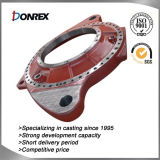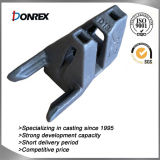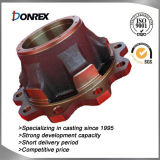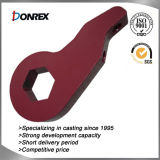| Prod Model: |
OEM |
| Markets: |
North America,South America,Southeast Asia,Mid East,Western Europe |
| Certificate: |
SGS |
| Material: |
Aluminum Alloy |
| Surface Preparation: |
Sand Blasted |
Product Description
1. Our die casting motor cover has following advantages:
Made of aluminum alloy (A380, ADC12,etc.), good surface finish, accurate dimensions, CNC machined;
Design and production as per customer's requirement;
We can make assembly products;
Short delivery time for both samples and after orders;
First article layouts and spectrometer material certifications are provided with all first article samples;
2. Die casting process describing:
Die casting is the process where molten metal is injected into a mold under high pressure in the range of 10 - 210MPa. This will result in a highly uniform casting with very good surface finish and exceptional dimensional accuracy. Usually this can either eliminate or greatly reduce the machining required to finish the part.
We can offer both the cold chamber process and the hot chamber process.
In the cold chamber process the metal is ladled into the injection chamber for each shot. There is less exposure of the molten metal to the chamber walls and plunger. This is very useful for aluminum and copper alloys that would easily alloy with iron at elevated temperatures.
The hot chamber process has the injection chamber which is connected to the die cavity permanently immersed in the molten metal. The hot chamber process is used for metals of low melting point and high fluidity such as tin and zinc.
The materials include alloys of aluminum, aluminum alloy, zinc and zinc alloy.
Zinc castings can be made with thinner wall thickness than aluminum due to high melt fluidity.
We can produce parts from very small to about 30kg for aluminum and 50kg for zinc.
| Minimum wall thickness and draft angles for die castings are as follows: |
| Material | Minimum Thickness | Minimum draft angle |
| Aluminum | 0.9 mm (.035 inch) | 0.5° |
| Zinc alloys | 0.6 mm (.025 inch) | 0.25° |





